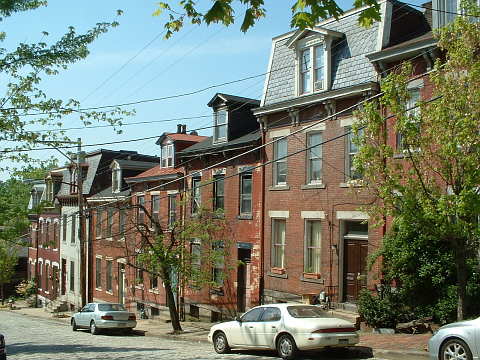

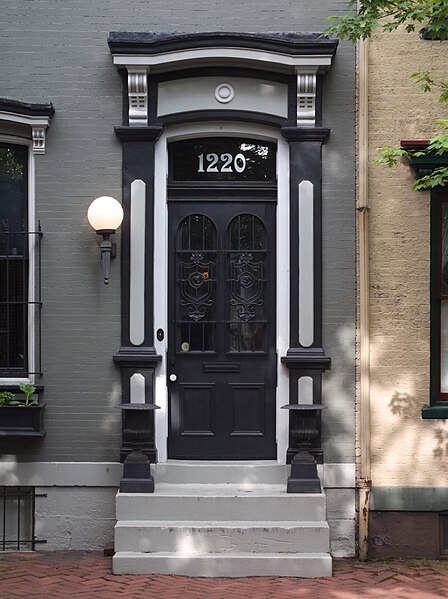
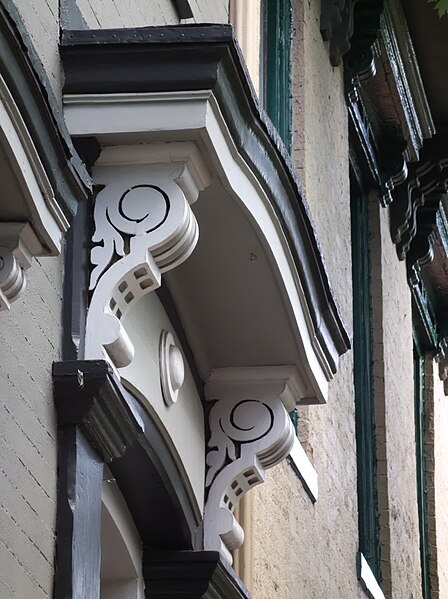
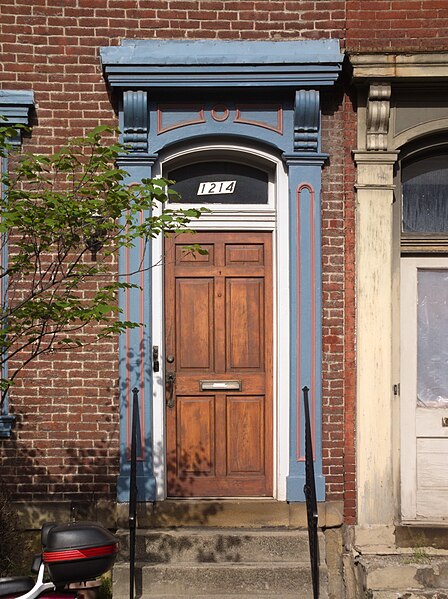
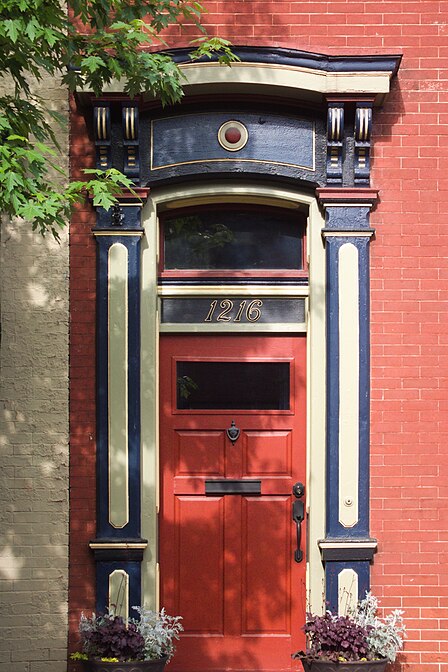


Evening sun paints the front of one of our most interesting churches—interesting both architecturally and historically. Father Pitt will admit that he is ignorant of most of the history, but perhaps a member of the congregation can fill in the rest.
The building originally belonged to a Presbyterian church; it was probably constructed in the 1890s. The Presbyterian congregation, however, did not last much more than twenty-five years; by 1923, the building is marked as “Tabernacle Cosmopolitan Baptist Ch. (Colored),” and it has remained in the hands of that congregation for more than a century. The congregation appears to have moved to this building from a smaller church in the East Street Valley.
When we look at this building, the thing that immediately strikes us is that there ought to be more church on top of it. Here is where Father Pitt does not know the whole story.
On the one hand, congregations would often build a foundation and roof it over just enough to make it serviceable until the money could be raised to complete the superstructure. We have seen that in the church-turned-firehouse in Beechview, for example, and it could have happened here.
But, on the other hand, a 1943 cornerstone tells us that there was a disastrous fire just before Christmas in 1936.

It’s clear that the front of the church dates from the 1890s; this Romanesque detail would have been not just out of fashion but impossible in 1943. It could be that a higher roofline was destroyed by the fire, and the resourceful congregation made use of what was still standing and finished it off into the church that stands today.
The building as it stands is a very good neighbor on its street. It is similar in height to the rowhouses that line the rest of the street, and it sits against the sidewalk at the same setback.


Some of the carved stone ornament has decayed, though we can still make out the lacey foliage it was intended to be.




Buena Vista Street is typical of the Mexican War Streets, which are themselves typical of many neighborhoods in the old city of Allegheny, though better preserved than most of the others. There are elegant middle-class rowhouses, churches, small shops, and small apartment buildings, all mixed side by side, as neighborhoods tended to develop in the age before zoning laws.




This small apartment building had its balconies filled in to make sunrooms early in its history, probably in the 1920s or thereabouts.


This substantial building in the narrow Mexican War Streets was probably put up in the 1890s; it belonged to I. Ziegler from the beginning of the twentieth century at least through 1923, and it was built on land marked as belonging to F. Ziegler in 1890. It is a whole little civilization unto itself, with a three substantial rowhouses, two storefronts, and apartments.






This was the home of one of the founders of the famous Boggs & Buhl department store, which lasted until 1958. A few years after Father Pitt took this picture, this grand house was grandly restored and opened as “The Inn on the Mexican War Streets.” Before the restoration, it had been the parsonage of Trinity Lutheran Church next door, creating a curious spectacle of a parsonage considerably grander than its squat little modern church. But the house needed more maintenance than the church could afford: in fact the new owners spent more than a million dollars fixing the place up.
If you look at this picture, you may have a vague impression that something is missing from this house; but unless you are in the architecture business it might take you ages to guess what it is. There are no gutters and no downspouts. It seems that Mr. Boggs had a thing about gutters. Instead, there is a remarkable internal drainage system that, when it works, carries runoff through the walls, and, when it is broken, pours runoff in a burbling cascade down the grand staircase. That is one of the reasons it took a million dollars to restore this house.
Addendum: The architects were Longfellow, Alden & Harlow; the house was built in 1888.

A small but very tasteful church (finished in 1909) that faces the beautiful expanse of West Park across North Avenue. The architect, according to this brochure, was Robert Maurice Trimble, a native of Allegheny.

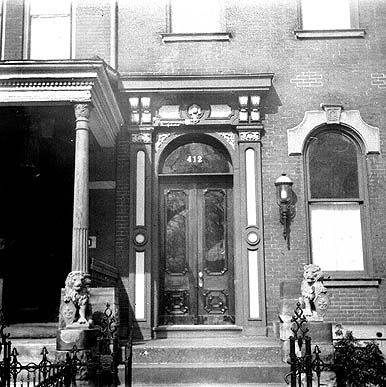
A beautifully proportioned entrance on North Avenue in the Mexican War Streets. If the picture looks like something from the 1930s, it isn’t. But the camera is. It’s an old Agfa Isolette, using Croatian film whose formula hasn’t changed since this camera was new.
The Mexican War Streets are mostly flat, but at the back end they start to creep up the hill toward Perry Hilltop. This beautiful block of rowhouses is just about perfect: the street paved with Belgian block, the houses well taken care of but not ostentatiously overrestored, and filled with friendly neighbors.
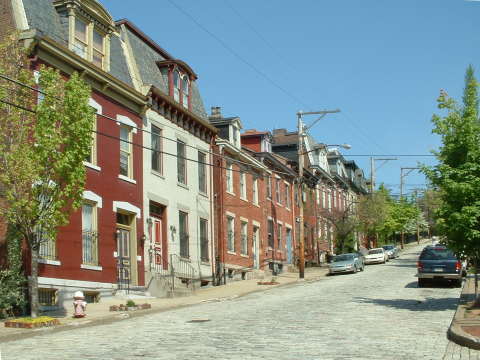

Brick sidewalks have their own charm, and they become more charming as they age and grow more difficult to walk on.
